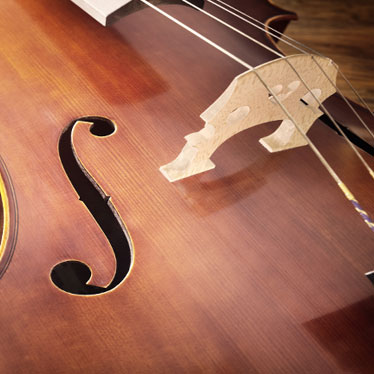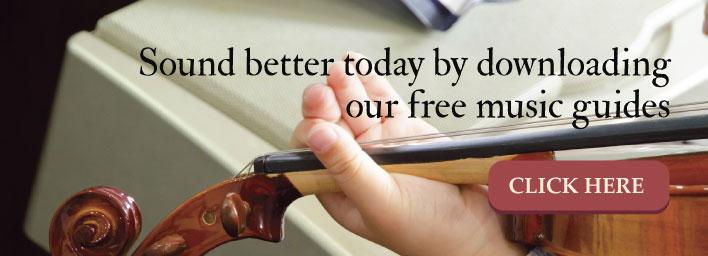9 Tips To Care For Your String Instrument In The Winter

Science teaches us that wood expands in the heat and contracts in the cold, it swells when it absorbs moisture and shrinks when it's dry again. String instruments are no exception and require special care during the winter months.
Those transitions from cold (or wet!) environments, to dry, heated interiors - and back again - lead to expensive instrument repairs if you're not careful.
Don't let valuable and beloved instruments suffer during this season's cold weather. Here are 9 tips to keep your instrument in great shape this winter:
1. Keep it in the case
Protection is the #1 goal of your instrument's case - ease of carrying secondary. For that purpose, keeping instruments in their cases when not in use is essential to protect them from the negative effects of temperature fluctuations, moisture exposure or even the sun's rays permeating through a practice room window.
2. Try to avoid any abrupt environmental changes
Wood does best when it has time to acclimate to new temperatures or changes in humidity so avoid any abrupt changes whenever possible. Take the time to provide adequate protection (see #1) whenever your instrument is transitioning from an interior practice room to the campus's performing arts center, or as you run from the car through the rain into your rehearsal location, etc.
3. Don't leave instruments in the car
The car may seem like the ultimate carrying case, but the temperature fluctuations from day to night can cause long-term, and possibly irreversible, damage. Even those cellos and stand-up basses need to be lugged inside and out again from day-to-day, rather than left to languish in a vehicle interior with fluctuating temperature and humidity levels.
Even in their own cases, instruments left inside a car during the transition from daytime to nighttime can be negatively impacted so always bring them inside.
4. Identify humidity levels in your home
Most wood instruments prefer humidity levels of around 50%. This is more or less the ideal humidity level for you and your household occupants as well. You can purchase basic humidity level testers (called hygrometers) at your local home improvement store, which can be used to test the humidity levels in the places your instrument lives most often.
Products, like DAMPIT, maintain proper humidity levels inside the instrument's preferred home - aka "the case."
5. Consider humidity/humidifying-specific appliances
If your hygrometer continually reports inadequate humidity levels in either direction, consider buying a humidifier or dehumidifier (depending on readings) to compensate. The good news is that getting humidity levels into the desired comfort level for stringed instruments and humans (between 40% and 60%) is beneficial for all.
6. Remove rosin dust after every use
Your instrument should be wiped down thoroughly and completely after each use using a microfiber cleaning cloth. This includes both the body and the strings. Adequate dusting removes rosin dust that could become moist and adhere to the body - compromising both looks, sound and long-term condition.
In addition to regular dusting, string instrument(s) deserve a good polishing every once in a while to preserve and protect their finish. Only use polish products that are specific to your instrument and never use any product that contains alcohol as this will ruin the finish and dry out the wood.
7. Keep instruments away from vents or heating/cooling sources
Yes, your instrument prefers a moderate climate. However, unlike you - it doesn't like to warm itself by a radiator or heater vent. These direct sources of heating will dry it out and contribute to those extreme temperature variances you're trying to avoid.
Instead, store it in a space that has a moderate temperature and away from direct heat sources.
8. Have extra strings on hand - and know how to use them
This is a "String Instrument 101" lesson but it's especially important during the colder months when the pegs that hold the strings are prone to the aforementioned expansion and contraction. Expanding/contracting pegs can results in snapped strings. Having an extra set on hand - and knowing how to string your instrument - will minimize missed notes.
Strings that snap frequently could be a literal barometer that your instrument is suffering from the cold. If you feel temperature and humidity issues are under control, have the instrument inspected by your music instructor or a professional to narrow down and address potential issues.
9. Arrive a little early before you perform
If you'll be performing in a climate that's different from the norm, arrive a little early and allow your instrument to acclimate - first in the case, then with it open - and finally in your hands during warmups.
High-quality instruments last a lifetime when they're well-cared for, and this includes taking the time to protect them from seasonal elements year after year.
This article sponsored by Thomastik-Infeld


